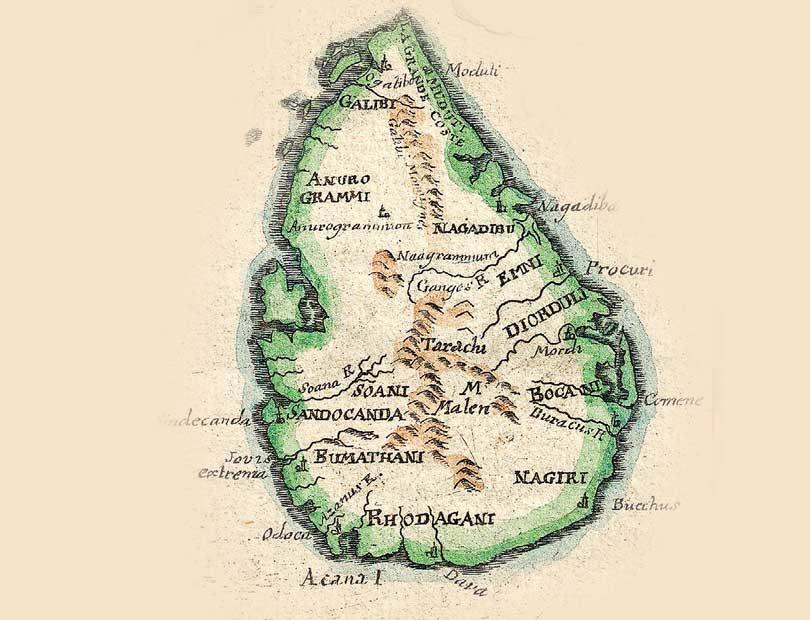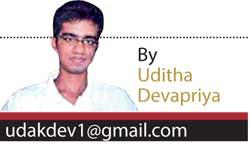Reply To:
Name - Reply Comment
The second of four articles, outlines from an upcoming book

 Like the monasteries before them, the Jesuit colleges were supported by temple lands which had been transferred to the churches. On October 22, 1605, for instance, on the orders of Jeronimo D’Azevedo the villages of Munneswaram, Moratuwa, and Kohilawatte were transferred to the Jesuit College at Colombo; later several villages in the Siyane Korale were added; a distinction was drawn between residences of priests, which could not retain funds from private donors, and colleges, which could. Vito Perniola, criticising Abeyasinghe’s view that missionary enclaves drained the treasury, argues that this modified form of viharagam and devalagam revived agriculture, though this is contested given the scorched earth policies of the military that would have reversed the gains of such a revival.
Like the monasteries before them, the Jesuit colleges were supported by temple lands which had been transferred to the churches. On October 22, 1605, for instance, on the orders of Jeronimo D’Azevedo the villages of Munneswaram, Moratuwa, and Kohilawatte were transferred to the Jesuit College at Colombo; later several villages in the Siyane Korale were added; a distinction was drawn between residences of priests, which could not retain funds from private donors, and colleges, which could. Vito Perniola, criticising Abeyasinghe’s view that missionary enclaves drained the treasury, argues that this modified form of viharagam and devalagam revived agriculture, though this is contested given the scorched earth policies of the military that would have reversed the gains of such a revival.
Certainly, the links between priests and locals were strong. This was vital to the missionary project, but at times it had the effect of distancing priests from the Lisbon administration even though Papal Bulls had tried to unify the goals of missionaries and officials. That is not to say their sympathies were with the indigenous Buddhist and Hindu population. But at the same time, after they converted a community to Catholicism, they found themselves to be at odds with administrators who treated the newly converted with contempt and derision.
No doubt most priests shared the bigoted views of the officials; in an official dispatch to Alfonso V of Portugal, for instance, Pope Nicholas V wrote, “the enemies of the Christian religion should be… subjugated to the Christian religion.” But once they achieved their aim of conversion, local priests privileged the education of parishioners over the need to maintain their domination by the administration, the reason being that since they were closer to the people than the officials or those higher up in the ecclesiastical hierarchy in Goa and Cochin, they were probably more sympathetic to locals; this often brought them into confrontation with administrators. The splits between Franciscans, Jesuits, and Augustinians which divided the country into missionary territories merely compounded this dilemma.
If Portuguese educators or missionaries were divided along factional lines, their successors, the Dutch, were greatly helped by the absence of such splits. Upon the annexation of the country: Barring the Kandyan kingdom by the Dutch East India Company in 1658, trade and commerce, particularly of cinnamon, took precedence over ecclesiastical matters.
All these had the effect of bringing priests and officials to a common understanding regarding the education of locals: Officials wanted to eradicate Portuguese presence from the island, and priests wanted to convert Catholics to Calvinism. There would have been times when the evangelical fervour of the priests was a hindrance to the trade ambitions of the administrators. But these were few and far in between. That, more than anything else, explains the more rigid, disciplined school structure the Dutch were able to enforce throughout their rule, which impressed even the first British Governor, Frederick North.
The Dutch instituted what they christened as the Scholarchal Commission, “composed of the Dessave…; all the Clergy of Colombo…; and three or four other gentlemen Civil and Military.” They appointed as schoolmasters those who had been tasked with registering baptisms and marriages, the tombo-holders. Two officials, “a clergyman and a layman, who was called the Scholarch”, routinely visited schools and drafted reports. “Their visit was previously announced to the villagers by Tomtom beating, when both adults and children were summoned by the vidhan and the School master to be present.”
The Dutch paid as much attention as, if not more attention than, their predecessors, to the upkeep of public institutions. They came up with a clearly defined curriculum. Attendance was made compulsory through a system of fines which doubtless later contributed to the deterioration of relations between Dutch administrators and locals. In this the schoolmaster had less power than the inspectors; the latter were tasked with deciding on whether a student had the requisite levels of knowledge to graduate.
At the age of 15, students would be issued a certificate and then designated, at the inspector’s discretion, as “largadeen”, which meant they were literally “set at large.” They were required to attend school twice a week for a further three years to obtain religious instruction. After this period they would be designated as “nieuwe largardeen” or “newly discharged.” Even then their school career was not over: after a further two years, they would be labelled as “oude largadeen” or “old discharged.” Some would remain for as much as another nine or 10 years, undergoing further religious training.
To counter the onslaught of Catholicism, seminaries were built everywhere. Regarding these, we are told that “the students trained… were few in number and were carefully selected.” However, the people were not conversant in the language of the conqueror: Van Imhoff recorded an instance of youths at the seminaries “talking in Latin or poring over Greek.” The more gifted students would, at the end of their scholarship, be sent to the Universities of Holland, though in 1700 this proposal, deemed a failure, was discontinued.
Along with native schools and seminaries, there were also schools for Dutch children. These were “of an elementary nature” and they were divided into three types: Orphan, Parish, and Private. Orphan and Parish schools were funded by the government. The teachers or masters in all three were men of the Church: “prelectors, catechists, and visitors of the sick, or schoolmasters in the Company’s service.” Among secular subjects taught at Dutch schools were spelling, reading, writing, singing, arithmetic, and geography; these were in addition to the two religious subjects, scripture and catechism.
According to official reports, in 1760 there were 12,708 children attending native government schools in the Colombo District; by 1786, towards the end of Dutch rule, the number had risen to 28,867. Paul Pieris writes that “no provision appears to have been made for the education of girls… [and] the sons of its European servants.” In this, however, he was only half-correct: In 1760, there were 5,180 girls attending schools in Colombo; the number in 1772 stood at 8,478. In fact education of women, overlooked in the pre-colonial era because of religious and cultural taboos, was looked into fairly well by the Dutch.
The tombo holders in played a dual role: They enforced attendance at schools and maintained civil records. The Scholarchal Commission was rooted in the tombo system: The State, in other words, maintained the tombos, and the tombos were connected to schools. The Commission, Pieris tells us, fulfilled three functions: The upkeep of education, the supervision of Christians, and the taking down of the history of locals. Of the latter Pieris tells us the Commission showed “... who and what his parents and family were; when he was baptised and married, what education he received, when he died and what family he left behind.”
Until 1703, we are told, the Commission did not meet regularly. The native schools and their buildings were thus neglected. In the Colombo District the earliest notice regarding the native schools comes to us from 1712, when the number stood at 30: 24 Sinhala and six Tamil. There seems to have been the usual, regular complaints about poor maintenance: in 1721 a complaint was made of “ignorant Masters”, while in 1750, added complaints of students turning to “heathenism” and “popish insinuations” stacked up.
In fact the Dutch education system had to put up with not one, but two, obstacles: The pagan and the Catholic. (Interestingly, Catholic priests distinguished between Protestants “heretics” and Buddhist, Hindu, Muslim, and Vedda “heathens.”) It remains one of the peculiarities of the era, but second generation Catholics, whose fathers had embraced their faith at the point of the sword, stubbornly stuck to “popishness” despite every effort by Dutch officials, priests, and educators to convert them; Abeyasinghe, pondering on this, contends that it may have been because the second generation, unlike the first, genuinely believed in their faith : An irony given that by now a new administration was fast issuing proclamations, or plakaats, forbidding Catholicism. The first such plakaat, issued by Van Goens on September 16, 1658, made conversions illegal. But such measures were not successful:
“… in 1699 on Van Rheede’s orders, all Roman Catholic Churches and secret conventicles were closed, but it was a shock to the Company’s officers when they discovered eight years later, that most of the 35 churches in Jaffna were well stocked with heathen literature. It was impossible to blink the fact that the natives were at heart heathen. The Vannias who had all been baptised, were more than suspected of being ‘devil-worshippers’, which probably meant Hindus, and their resolute refusal to admit the Dutch within their houses aggravated the suspicion.”
A proclamation made on June 6, 1711 forbidding heathen worship among the Hindus, an order that followed soon after forbidding Christians to marry Buddhists, and an Ordinance in 1760 criminalising the marriage of Christian women and pagan men (a crime punishable by vigorous flogging, hard labour for life, confiscation of property, and enslavement of children) were all, however, as ineffective as the previous anti-Catholic measures. Simply put, “the Hollander lacked the zeal of the Portuguese.”